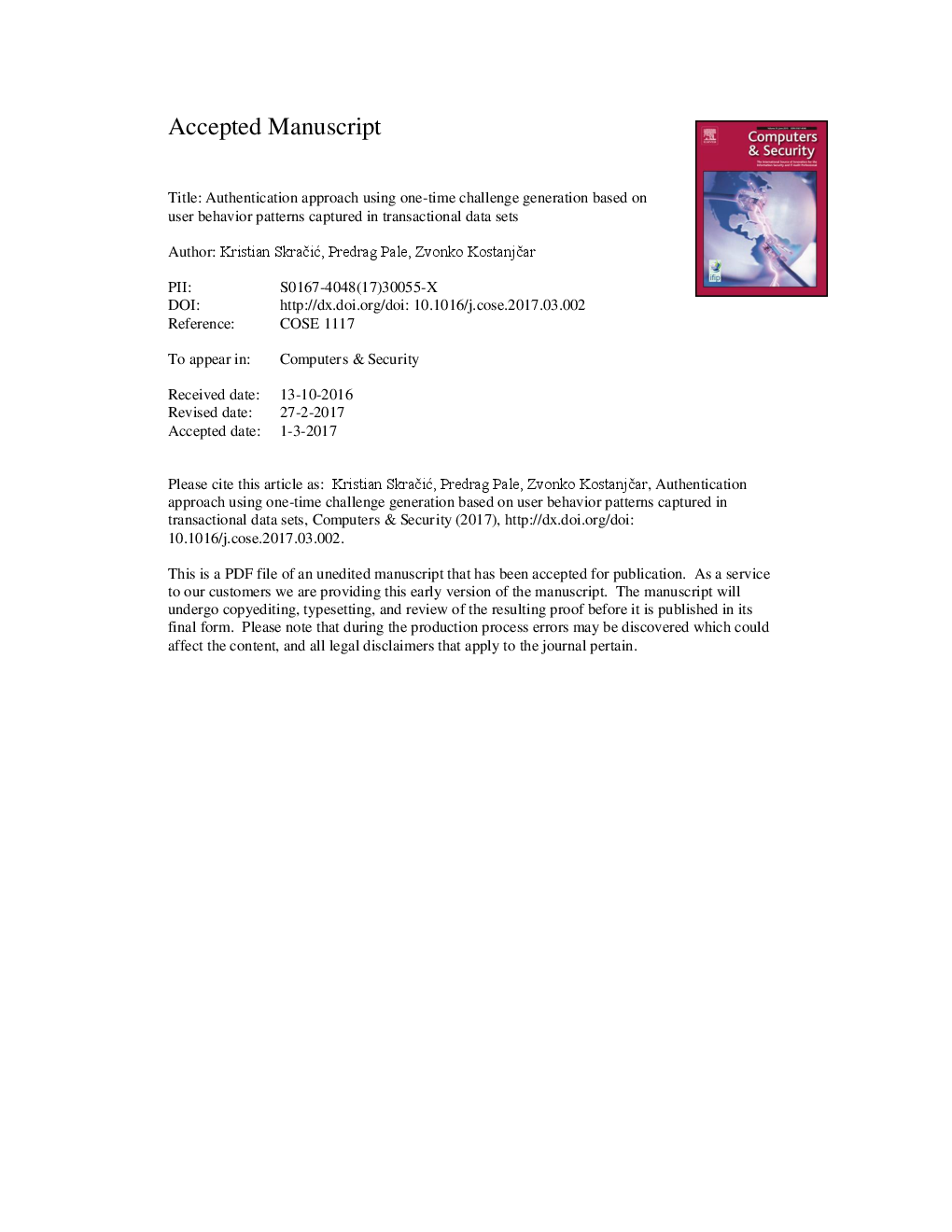ترجمه فارسی عنوان مقاله
روش تأیید اعتبار با استفاده از یک بار کشف چالش بر اساس الگوهای رفتار کاربر گرفته شده در مجموعه داده های تراکنش
عنوان انگلیسی
Authentication approach using one-time challenge generation based on user behavior patterns captured in transactional data sets
| کد مقاله | سال انتشار | تعداد صفحات مقاله انگلیسی |
|---|---|---|
| 97578 | 2017 | 25 صفحه PDF |
منبع

Publisher : Elsevier - Science Direct (الزویر - ساینس دایرکت)
Journal : Computers & Security, Volume 67, June 2017, Pages 107-121
ترجمه کلمات کلیدی
تأیید هویت کاربر، یک بار تولید چالش، پروفایل رفتار کاربر الگوهای مجموعه داده های تراکنش، احراز هویت مبتنی بر دانش، احراز هویت مبتنی بر سوال،
کلمات کلیدی انگلیسی
User authentication; One-time challenge generation; User behavior profiling; Transactional data set patterns; Knowledge-based authentication; Question-based authentication;

